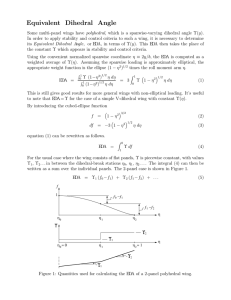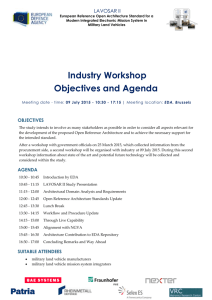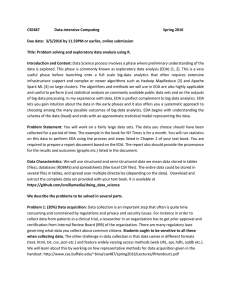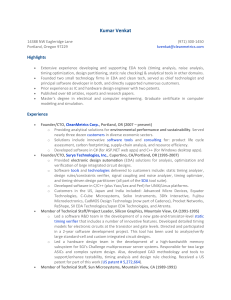MSWord
advertisement
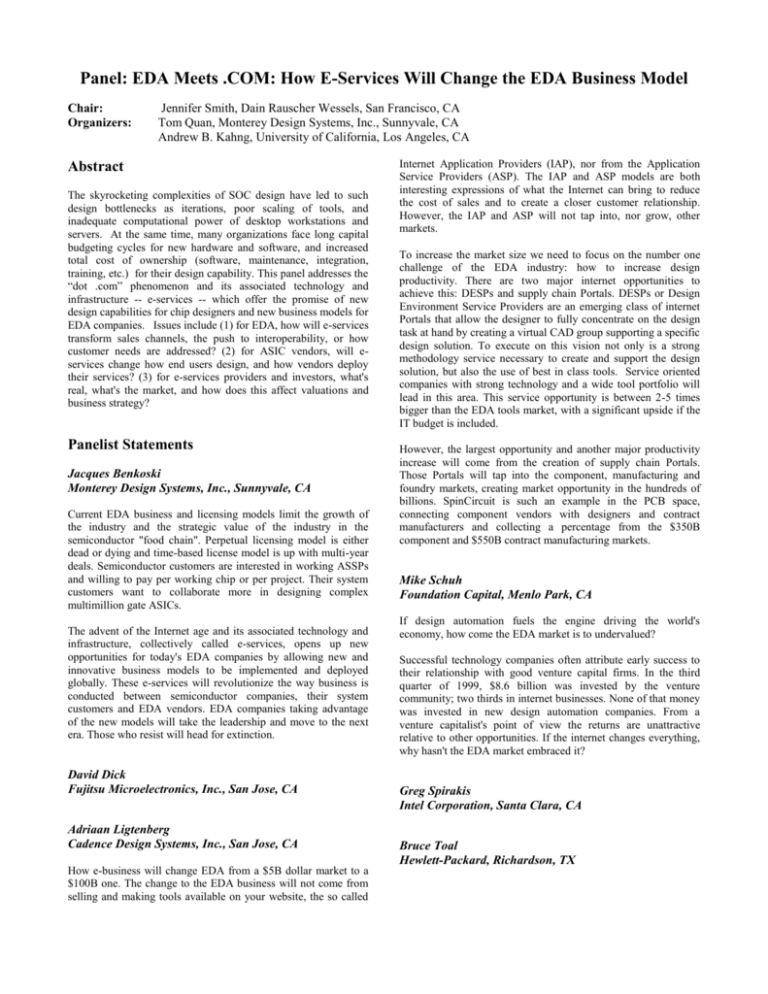
Panel: EDA Meets .COM: How E-Services Will Change the EDA Business Model Chair: Organizers: Jennifer Smith, Dain Rauscher Wessels, San Francisco, CA Tom Quan, Monterey Design Systems, Inc., Sunnyvale, CA Andrew B. Kahng, University of California, Los Angeles, CA Abstract The skyrocketing complexities of SOC design have led to such design bottlenecks as iterations, poor scaling of tools, and inadequate computational power of desktop workstations and servers. At the same time, many organizations face long capital budgeting cycles for new hardware and software, and increased total cost of ownership (software, maintenance, integration, training, etc.) for their design capability. This panel addresses the “dot .com” phenomenon and its associated technology and infrastructure -- e-services -- which offer the promise of new design capabilities for chip designers and new business models for EDA companies. Issues include (1) for EDA, how will e-services transform sales channels, the push to interoperability, or how customer needs are addressed? (2) for ASIC vendors, will eservices change how end users design, and how vendors deploy their services? (3) for e-services providers and investors, what's real, what's the market, and how does this affect valuations and business strategy? Panelist Statements Jacques Benkoski Monterey Design Systems, Inc., Sunnyvale, CA Current EDA business and licensing models limit the growth of the industry and the strategic value of the industry in the semiconductor "food chain". Perpetual licensing model is either dead or dying and time-based license model is up with multi-year deals. Semiconductor customers are interested in working ASSPs and willing to pay per working chip or per project. Their system customers want to collaborate more in designing complex multimillion gate ASICs. The advent of the Internet age and its associated technology and infrastructure, collectively called e-services, opens up new opportunities for today's EDA companies by allowing new and innovative business models to be implemented and deployed globally. These e-services will revolutionize the way business is conducted between semiconductor companies, their system customers and EDA vendors. EDA companies taking advantage of the new models will take the leadership and move to the next era. Those who resist will head for extinction. David Dick Fujitsu Microelectronics, Inc., San Jose, CA Adriaan Ligtenberg Cadence Design Systems, Inc., San Jose, CA How e-business will change EDA from a $5B dollar market to a $100B one. The change to the EDA business will not come from selling and making tools available on your website, the so called Internet Application Providers (IAP), nor from the Application Service Providers (ASP). The IAP and ASP models are both interesting expressions of what the Internet can bring to reduce the cost of sales and to create a closer customer relationship. However, the IAP and ASP will not tap into, nor grow, other markets. To increase the market size we need to focus on the number one challenge of the EDA industry: how to increase design productivity. There are two major internet opportunities to achieve this: DESPs and supply chain Portals. DESPs or Design Environment Service Providers are an emerging class of internet Portals that allow the designer to fully concentrate on the design task at hand by creating a virtual CAD group supporting a specific design solution. To execute on this vision not only is a strong methodology service necessary to create and support the design solution, but also the use of best in class tools. Service oriented companies with strong technology and a wide tool portfolio will lead in this area. This service opportunity is between 2-5 times bigger than the EDA tools market, with a significant upside if the IT budget is included. However, the largest opportunity and another major productivity increase will come from the creation of supply chain Portals. Those Portals will tap into the component, manufacturing and foundry markets, creating market opportunity in the hundreds of billions. SpinCircuit is such an example in the PCB space, connecting component vendors with designers and contract manufacturers and collecting a percentage from the $350B component and $550B contract manufacturing markets. Mike Schuh Foundation Capital, Menlo Park, CA If design automation fuels the engine driving the world's economy, how come the EDA market is to undervalued? Successful technology companies often attribute early success to their relationship with good venture capital firms. In the third quarter of 1999, $8.6 billion was invested by the venture community; two thirds in internet businesses. None of that money was invested in new design automation companies. From a venture capitalist's point of view the returns are unattractive relative to other opportunities. If the internet changes everything, why hasn't the EDA market embraced it? Greg Spirakis Intel Corporation, Santa Clara, CA Bruce Toal Hewlett-Packard, Richardson, TX

